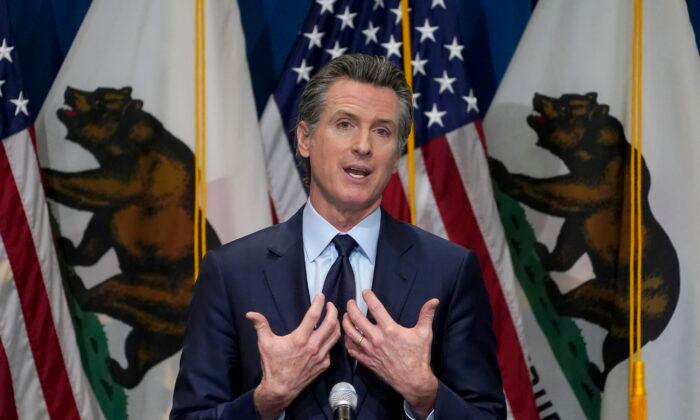The most important California government document every year is the governor’s January budget proposal. The one for fiscal year 2023-24, which begins on July 1, will be released Jan. 10 by Gov. Gavin Newsom.
The January budget sets the tables for budget negotiations lasting until the governor’s May Revision—the “May Revise” in Sacramento parlance. Then there’s a sprint to pass budget bills before the June 15 deadline in the California Constitution.
When the money is flowing copiously into the treasury, as in the past decade, it’s easy for the Legislature and governor to haggle over items and meet the deadline. I remember when Gov. Gray Davis pushed his first budget through the Legislature just minutes after midnight on June 15, 1999, so technically in violation of the Constitution, and he quipped, “Good enough for government work!”
For those of you who never have been in government—I first heard the phrase four decades ago in the U.S. Army—it means nobody expects private-sector efficiencies in government work.
That was a year when the budget soared 15 percent over the previous year, to $66.5 billion for the general fund. The next year, it rose again, to $78.1 billion. But soon, the dot-com recession hit in 2000, massive deficits threatened, and the budget had to be cut to $76.8 billion for 2001-02. Davis was recalled and replaced by Gov. Arnold Schwarzenegger, who promised to “blow up the boxes” of government waste.
He succeeded for three years, keeping the budget reasonable. It grew to only $79.8 billion by 2004-05. But then he, too, succumbed to spending mania. His next budget, for 2005-06, soared to $91.6 billion. Then again, to $101.4 billion in 2006-07, breaking the $100 billion barrier for the first time.
When the inevitable recession hit in 2007, now called the Subprime Meltdown, the massive deficits returned. That $101.4 billion budget was chopped down to $87.2 billion for 2009-10.
In 2008, the budget was signed on Sept. 23, the latest date ever. In January 2009, Schwarzenegger, who had won office promising not to raise taxes, pushed through a record $13 billion tax hike.
Today, fortunately, there’s a cushion that didn’t exist during those previous downturns. The state Rainy Day fund and the Public School System Stabilization Account, also known as the Prop 98 Rainy Day Fund, amount to $30 billion combined.
- Amazon is laying off 18,000 employees nationwide. Although headquartered in Seattle, it has a large presence in Silicon Valley for programming, and everywhere in California for distribution.
- Salesforce, San Francisco’s largest employer, is laying off 8,000 employees.
- Tesla, with a factory still in Fremont after its HQ moved to Texas, is planning layoffs. Its stock has crashed the past year. Critics are blaming CEO Elon Musk’s purchase of Twitter, diverting his attention. But almost all tech stocks are off sharply. Tesla is not really a car company, but a high-tech battery company attached to a car platform.
It will be a year of pain.





